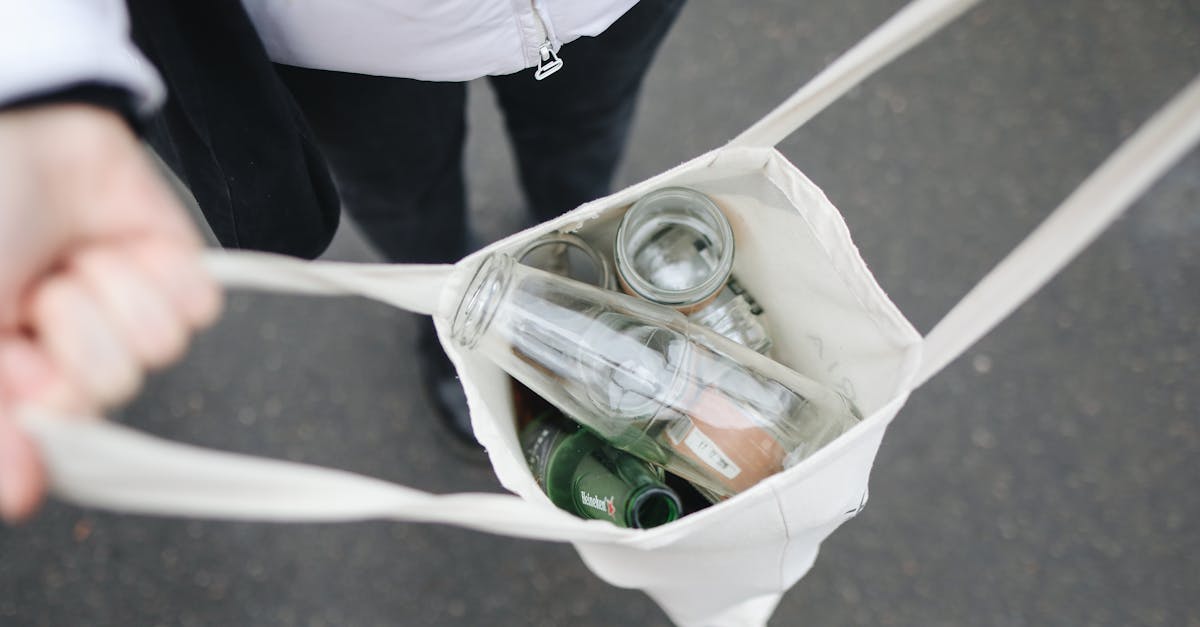Unveiling the Green Revolution: Packaging a Sustainable Future for E-commerce

Unveiling the Green Revolution: Packaging a Sustainable Future for E-commerce. In an era where convenience meets conscience, the e-commerce landscape has witnessed a remarkable evolution in product packaging. This transformation has been underscored by an ever-growing concern for the environmental impact of traditional packaging methods. However, with the unveiling of sustainable options, a new chapter emerges, one promising a harmonious blend of modern convenience and ecological responsibility. As we explore the intricacies of this sustainable packaging revolution, it’s clear that we stand on the cusp of a pivotal transformation, one that is set to redefine the future of e-commerce packaging and its impact on our planet. Join us as we delve into the latest innovations, challenges, and triumphs shaping the sustainable packaging narrative in the e-commerce domain.
1. The Evolution of E-commerce Packaging
Thank you for reading this post, don't forget to subscribe!
The evolution of e-commerce packaging marks a fascinating journey that reflects the ever-changing landscape of consumer demands and sustainability goals. Over the years, product packaging in the e-commerce sector has seen a remarkable transformation, transitioning from conventional, often excessive, packaging to more streamlined, eco-conscious solutions. This shift has been largely influenced by a rising consumer consciousness, demanding not just convenient delivery but also responsible packaging that minimizes environmental impact. The narrative of this evolution covers a wide spectrum, from the gradual reduction of excess packaging to the increased use of biodegradable materials, showcasing a commitment to weave sustainability into every aspect of the e-commerce experience.
As technology and consumer expectations continue to evolve, so too does the packaging landscape within the e-commerce domain. The emergence of innovative packaging designs and materials illustrates a collaborative effort by businesses to meet the dual objectives of functionality and sustainability, while also embracing the aesthetic appeal that enhances the unboxing experience. Moreover, the evolution of e-commerce packaging isn’t just limited to materials and design; it also encompasses logistical advancements such as smart packaging solutions, ensuring efficient use of space, and minimizing waste throughout the supply chain.
With a focus on enhancing customer experience and reducing environmental impact, the evolution of e-commerce packaging is steering the industry towards a future where every unboxing tells a story of conscious consumption and innovative design, charting a path that harmonizes convenience and eco-friendliness.
2. Environmental Impact of Traditional Packaging

Understanding the ecological implications of traditional packaging methods is pivotal in acknowledging the impact of our consumer choices. Conventional packaging, marked by excess use of non-biodegradable materials and inefficient designs, poses a significant threat to our environment. From plastic overuse contributing to pollution and harming wildlife to excessive packaging leading to unnecessary waste, the ecological footprint of traditional packaging methods is glaring. Moreover, the transportation and logistics involved in conventional packaging not only result in heightened emissions but also contribute to a larger carbon footprint, impacting our planet’s delicate balance.
Amidst these challenges, there is a growing realization among businesses and consumers alike about the urgency to rethink traditional packaging practices. The need to move beyond single-use plastics, reduce material waste, and minimize energy-intensive manufacturing processes has become increasingly pronounced. While these problems are complex, they have sparked a wave of innovation and collaboration, propelling the development and adoption of sustainable packaging alternatives that mitigate these environmental stressors.
As we delve deeper into the environmental impact of traditional packaging, it becomes evident that proactive measures and sustainable alternatives are crucial for shaping a healthier, more responsible future. From reimagining material choices to advocating for efficient, eco-friendly designs, understanding the ecological implications serves as a catalyst for the widespread adoption of packaging practices that are kinder to our planet.
3. Emergence of Sustainable Packaging Solutions
The emergence of sustainable packaging solutions has become a beacon of hope, representing a fundamental shift in the way e-commerce businesses approach product packaging. From biodegradable and compostable materials to innovative designs focused on recyclability and reusability, these sustainable alternatives serve as a testament to the industry’s commitment to responsible and eco-friendly practices. The move towards sustainable packaging has not only been fueled by environmental concerns but has also been embraced as an opportunity to elevate brand values and resonate with conscious consumers seeking mindful, ethical choices.
Innovations in sustainable packaging are reshaping the e-commerce landscape, presenting a diverse array of solutions ranging from plant-based plastics and mushroom packaging to upcycled and renewable materials. These alternatives are not just about environmental impact; they also embody creativity, offering aesthetically pleasing and functionally efficient designs that enhance the unboxing experience. It’s heartening to witness the collaborative efforts among packaging manufacturers, e-commerce platforms, and businesses to integrate these sustainable solutions seamlessly into their operations, striving to make every delivery a sustainable and thoughtful experience.
The advent of sustainable packaging solutions isn’t confined to just materials. It encompasses a holistic approach that includes packaging optimization to reduce size and weight, thereby minimizing transportation emissions and contributing to a more sustainable supply chain. With a focus on innovation and sustainability, these solutions are not merely an industry trend but an essential leap towards a future where responsible packaging aligns harmoniously with consumer expectations and environmental well-being.
4. Benefits of Sustainable E-commerce Packaging

Discovering the benefits of sustainable e-commerce packaging unfolds a narrative that intertwines positive environmental impacts and enhanced customer satisfaction. Embracing sustainable packaging options not only reduces the carbon footprint of e-commerce businesses but also resonates with environmentally conscious consumers, fostering a deeper sense of trust and loyalty. By leveraging sustainable practices, businesses can showcase their commitment to environmental stewardship, thereby differentiating themselves in an increasingly competitive market while eliciting a positive response from consumers who prioritize ethical and eco-friendly choices.
Beyond the environmental advantages, sustainable packaging also yields operational benefits. Efficiencies in packaging materials and logistics lead to reduced costs, contributing to a more sustainable bottom line. This strategic shift towards sustainable e-commerce packaging encapsulates a forward-looking approach, positioning businesses to adapt to evolving regulations, consumer preferences, and global sustainability standards, thereby future-proofing their operations while contributing to a positive ecological legacy.
Moreover, the positive impacts of sustainable e-commerce packaging extend beyond individual businesses, influencing the industry at large. By championing sustainable practices, businesses set noteworthy precedents, encouraging peer emulation and driving systemic change. Through collective action and widespread adoption, the e-commerce sector can pave the way for a more sustainable future, leaving an enduring legacy of responsible and mindful packaging practices for generations to come.
5. Challenges and Adoption of Sustainable Packaging
Exploring the challenges and adoption of sustainable packaging unveils a dynamic landscape marked by both hurdles and opportunities. While the shift towards sustainable packaging in e-commerce is propelled by a shared commitment to environmental responsibility, it does come with its set of challenges. One prevailing obstacle is the need for infrastructural and operational adjustments, including investments in new equipment and materials, compelling e-commerce businesses to navigate the initial costs and logistical intricacies of integrating sustainable packaging into their supply chains. Additionally, ensuring consumer education and buy-in presents another challenge, compelling businesses to convey the value and impact of sustainable packaging to their customers, ultimately driving widespread adoption.
Amidst these challenges lies a wealth of opportunities. The adoption of sustainable packaging opens doors to collaboration and innovation, fostering partnerships between businesses and packaging manufacturers to drive continuous improvement in sustainable solutions. This represents an exciting opportunity for businesses to differentiate themselves, not only in terms of their environmental stewardship but also as champions of customer-centric, ethical practices, appealing to a growing market of conscious consumers who prioritize sustainability.
Furthermore, the adoption of sustainable packaging presents an opportunity for e-commerce businesses to wield their influence and initiate positive change. By engaging in transparent conversations and sharing best practices, businesses can inspire industry-wide transformation, influencing peers and competitors to collectively champion sustainable packaging, ultimately shaping a more eco-conscious and responsible future for e-commerce.
6. Future of Eco-Friendly Packaging in E-commerce
The future of eco-friendly packaging in e-commerce promises a landscape teeming with innovation and conscientious practices. As sustainability continues to shape consumer choices and business strategies, the e-commerce sector stands at the brink of a transformative era in packaging. As we look ahead, the integration of advanced materials, such as plant-based plastics and biodegradable polymers, is set to revolutionize the way products are packaged and delivered, reducing the environmental impact while enhancing the unboxing experience for consumers.
Additionally, advancements in technology are poised to play a pivotal role in the future of eco-friendly packaging. From smart packaging solutions that optimize size and weight to the use of renewable energy in manufacturing and distribution processes, technological strides will intertwine seamlessly with sustainable packaging, paving the way for a more efficient, eco-conscious e-commerce ecosystem. Furthermore, there is a burgeoning emphasis on end-of-life solutions, including the development of circular systems that ensure packaging materials are recycled or repurposed, closing the loop on waste and minimizing environmental footprint.
Looking to the future, it’s clear that eco-friendly packaging in e-commerce isn’t just a trend; it’s a strategic imperative entwined with evolving consumer preferences and global sustainability goals. As businesses harness the power of innovation, collaboration, and technological advancements, the future of sustainable packaging in e-commerce holds the promise of a thriving, responsible industry that not only meets consumer expectations but also pioneers sustainable practices to safeguard our planet for generations to come.




